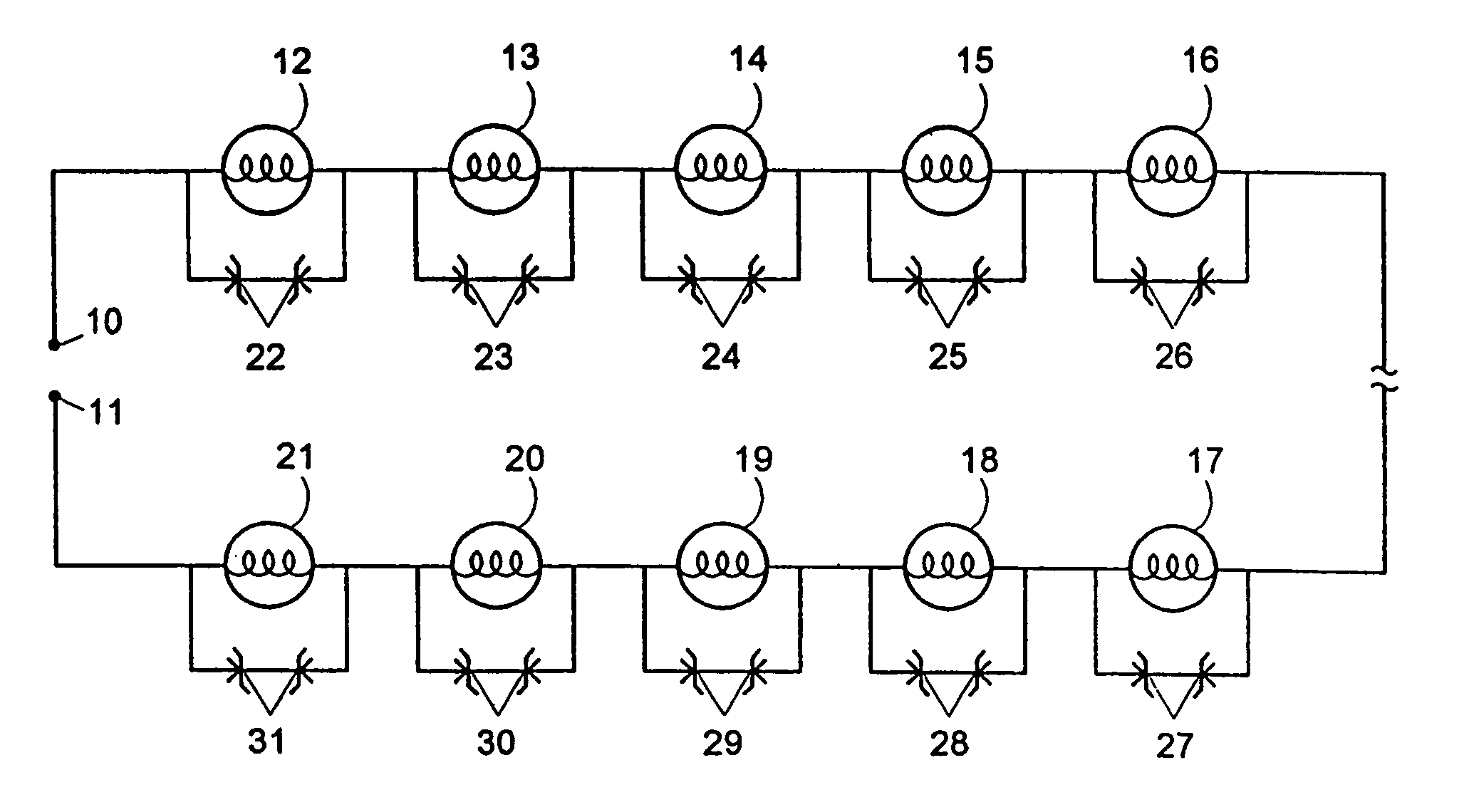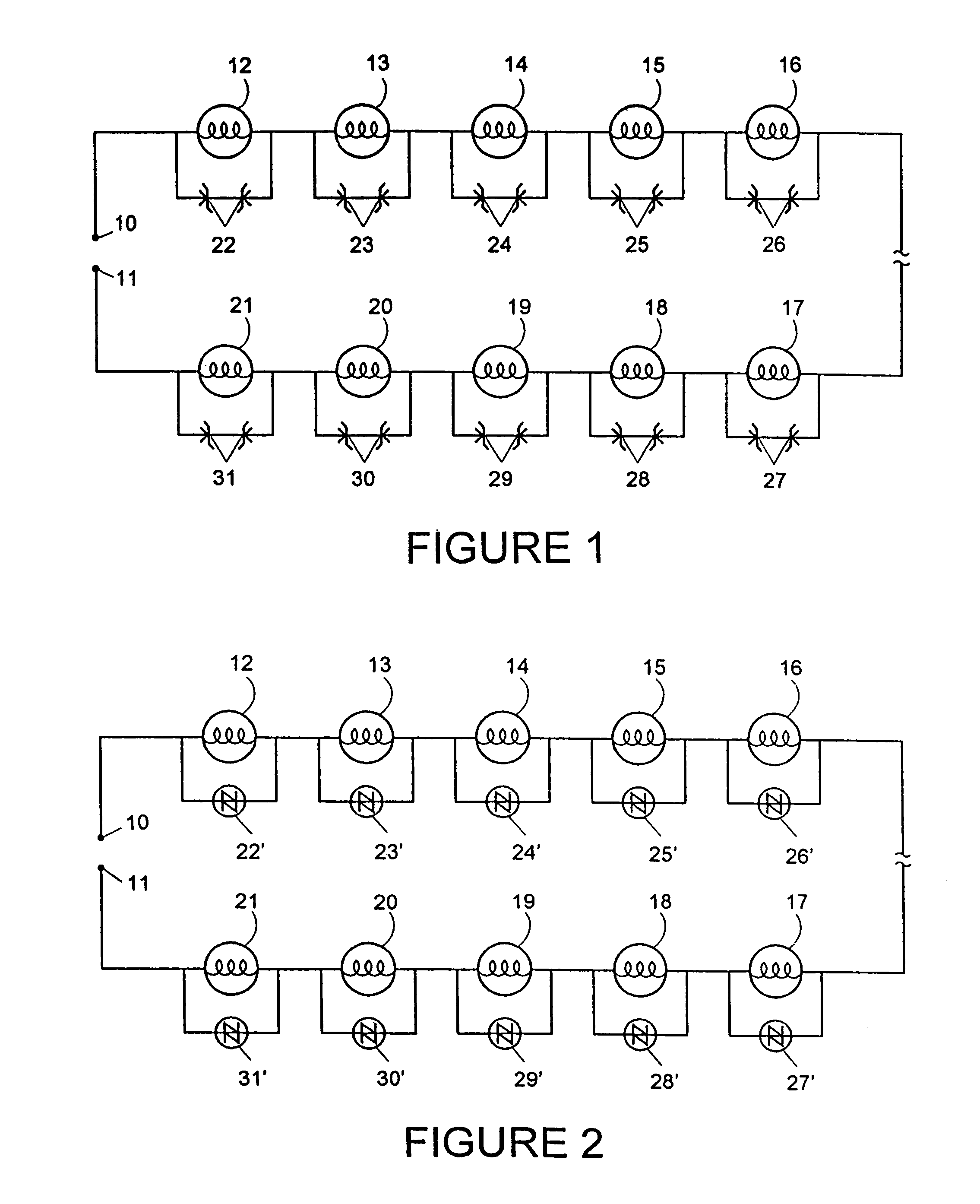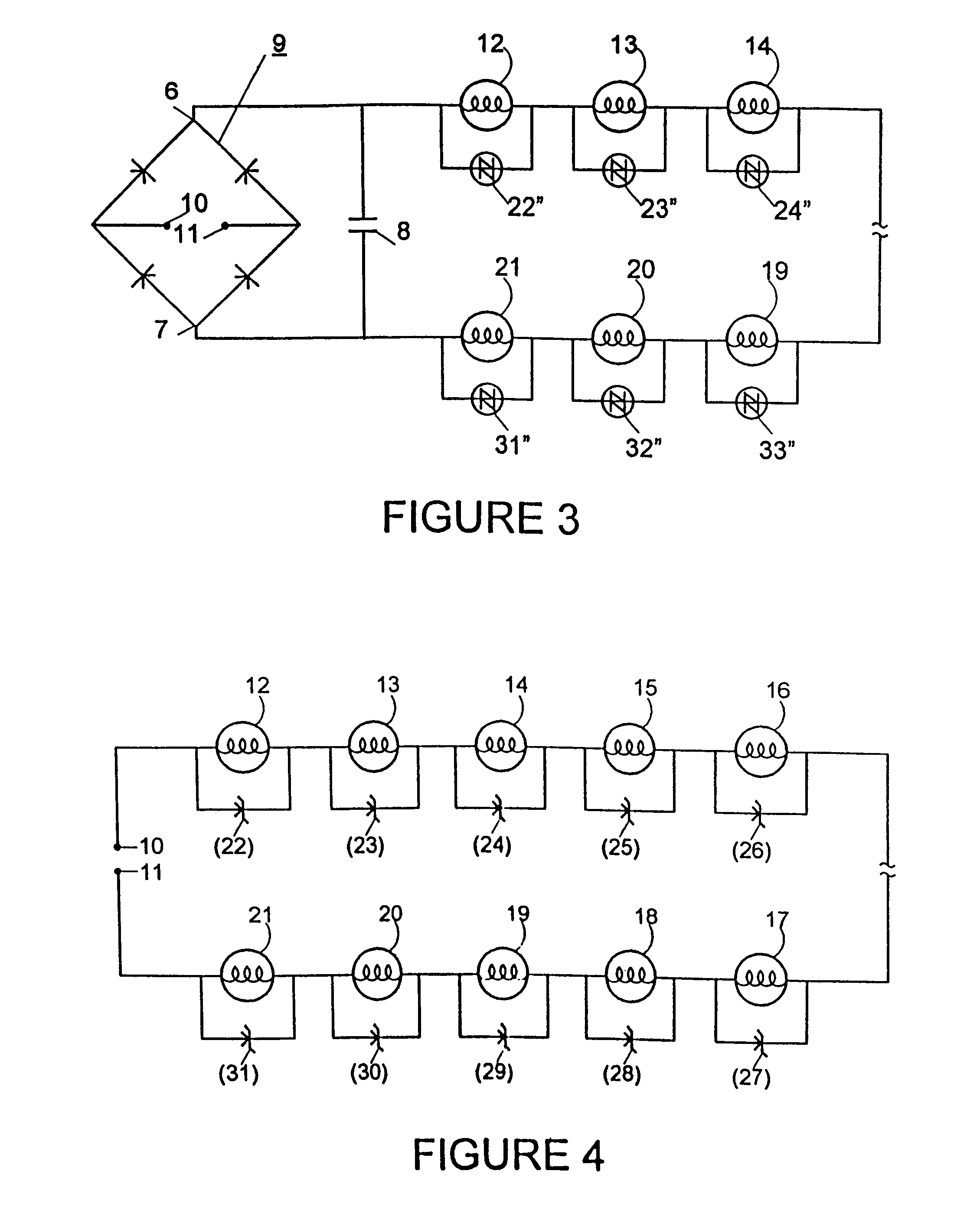Series connected light string with filament shunting
a technology of connected light strings and filaments, which is applied in the direction of lighting and heating apparatus, transportation and packaging, and support devices, etc., can solve the problems of inability to further solve additional problems, the short circuiting feature of the bulb does not always operate in the manner, and the entire string will go out, etc., to achieve simple and inexpensive, simple and economical construction, and the effect of simple and inexpensiv
- Summary
- Abstract
- Description
- Claims
- Application Information
AI Technical Summary
Benefits of technology
Problems solved by technology
Method used
Image
Examples
Embodiment Construction
[0026]With reference to the schematic diagram in FIG. 1, the novel light string constructed in accordance with the first embodiment of the present invention comprises input terminals 10 and 11 which are adapted to be connected to a suitable source of supply Of 110 / 120 volts of alternating current normally found in a typical household or business. Terminal 10 is normally fixedly connected to the first terminal of the first socket having a first electrical light bulb 12 operatively plugged therein. The adjacent terminal of the first socket is electrically connected to the adjacent terminal of the second socket having a second light bulb 13 operatively plugged therein, and so on, until each of the light bulbs in the entire string (whether a total of 10 bulbs, as diagrammatically shown, or a total of 50 as is typically the case) are finally operatively connected in an electrical series circuit between input terminals 10 and 11. Operatively connected in an electrical parallel across the ...
PUM
 Login to View More
Login to View More Abstract
Description
Claims
Application Information
 Login to View More
Login to View More - R&D
- Intellectual Property
- Life Sciences
- Materials
- Tech Scout
- Unparalleled Data Quality
- Higher Quality Content
- 60% Fewer Hallucinations
Browse by: Latest US Patents, China's latest patents, Technical Efficacy Thesaurus, Application Domain, Technology Topic, Popular Technical Reports.
© 2025 PatSnap. All rights reserved.Legal|Privacy policy|Modern Slavery Act Transparency Statement|Sitemap|About US| Contact US: help@patsnap.com



